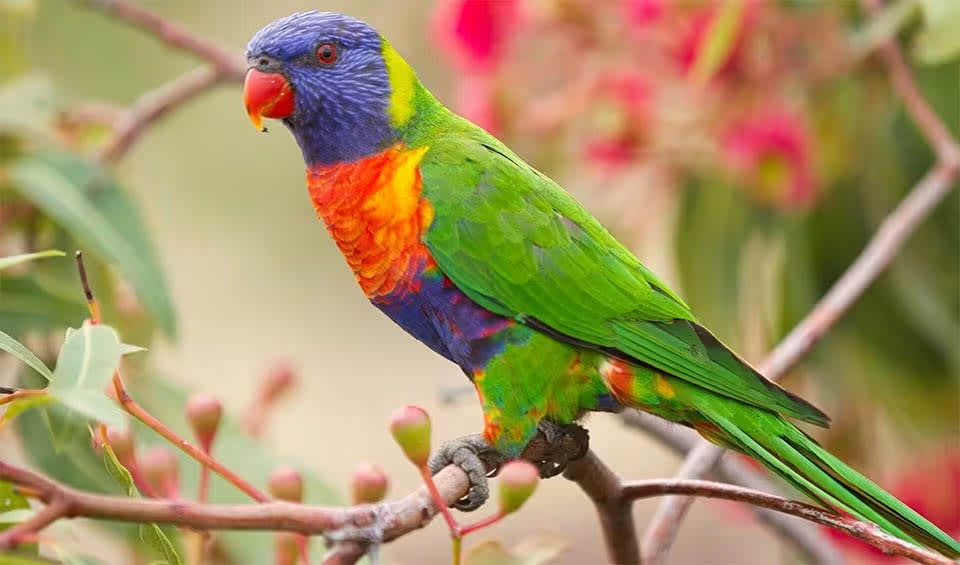It is truly a sight to behold, with its vibrant plumage reminiscent of a rainbow painting the sky. These medium-sized parrots are native to Australia, where they inhabit a variety of habitats, including forests, woodlands, and urban areas.
One of the most fascinating aspects of Rainbow lorikeets is their intricate social structure and breeding behavior. Mated pairs form strong bonds and work together to raise their young. While the female is primarily responsible for incubating the eggs, both parents share the duties of feeding and caring for the chicks once they hatch. Their territorial nature is also evident during the breeding season, as they vigorously defend their nesting sites from intruders.
Despite their charming appearance, Rainbow lorikeets can exhibit aggressive behavior, particularly when defending their territory or nesting sites. Their loud calls and assertive displays serve as warnings to potential rivals, signaling their readiness to defend their domain.
In addition to their social behavior, Rainbow lorikeets are known for their unique dietary preferences. Unlike many other parrot species, they have a specialized brush-tipped tongue adapted for feeding on nectar, pollen, and soft fruits. Their love for sweets often leads them to frequent fruit orchards and gardens, where they can become pests to fruit growers.
Unfortunately, Rainbow lorikeets face numerous threats to their survival, with the illegal pet trade being one of the most significant challenges. These colorful birds are highly sought after in the exotic pet trade, leading to illegal trapping and trafficking of wild individuals. Habitat loss and fragmentation due to urbanization and deforestation further threaten their populations, as their natural habitats are increasingly encroached upon by human activities.
Distribution
 Australia
AustraliaAnything we've missed?
Help us improve this page by suggesting edits. Glory never dies!
Suggest an editGet to know me
Terrestrial / Aquatic
Altricial / Precocial
Polygamous / Monogamous
Dimorphic / Monomorphic (size)
Active: Diurnal / Nocturnal
Social behavior: Solitary / Pack / Herd / Flock
Diet: Carnivore / Herbivore / Omnivore / Piscivorous / Insectivore
Migratory: Yes / No
Domesticated: Yes / No
Dangerous: Yes / No




